2017 Smart ForTwo Cabriolet First-Drive
As it turns out, size is not all that matters, at least as far as the Smart ForTwo Convertible is concerned. This summer, the first topless ForTwos will cross the pond, and when they do, owners will have a markedly better experience than on anything else to previously wear the Smart badge.
The new ForTwo Cabriolet shares the same underpinnings as the Smart ForTwo coupe, meaning you'll have the same Mighty Mouse 0.9-liter three-cylinder engine cranking out 89 horsepower and 100 lb.-ft. of torque. Those numbers sound small, but we're dealing with the smallest car on sale in America, likely weighing in somewhere around 2,100 pounds after the convertible top is added in.
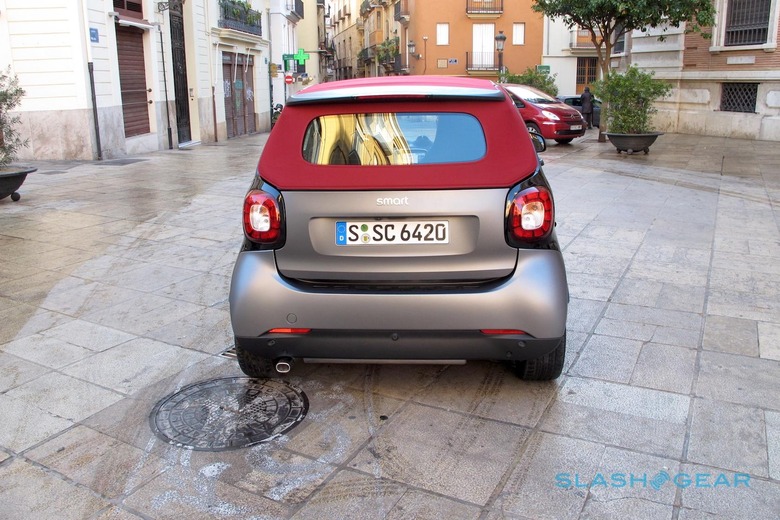
Factor in rear-wheel driving dynamics and a turbo, and you've got the makings for a zippy, surprisingly fun ride. Also of importance, the drop-top has the new Twinamic six-speed dual-clutch automatic transmission, a dramatic improvement over the one in the previous generation.
Aesthetically, there will be more than 100 color schemes to choose from, and the new model's improved, upmarket styling stands out: There's the distinct styling with LED headlights and beautiful taillights. Inside, adjustable three-prong circular air vents are sporty and effective, and small details like the separately mounted tachometer, or the retro-sliding temperature adjustment to control in-cabin climate, add character.
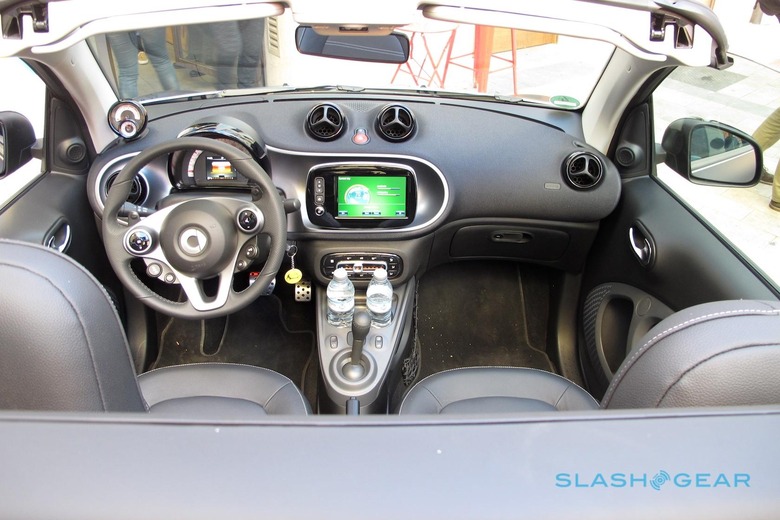
To be clear, this isn't a car for everyone, and head of Smart, Dr. Annette Winkler, exuberantly acknowledges as much. Commenting on her own Smart ForJeremy, created by designer Jeremy Scott, Winkler says "people stop me and tell me they love it, or they think I'm totally crazy, I know it's a polarizing car." While the ForJeremy has playful wings affixed to the rear pillars, the non-designer version is likely to elicit equally emphatic responses in both camps.
When I had first asked Dr. Winkler about the likelihood of Americans warming up to the new car in this, a country of Ford F-150s and Chevy Silverados — the two best selling vehicles in the U.S. — never mind gargantuan SUVs and crossovers, she nodded and said "of course we wouldn't turn away sales wherever they come from, but we're not looking for market share, we're looking for city share. From our very beginning, Smart has always been about the urban areas, the big cities." Framed within that context, the ForTwo begins to make a lot more sense.
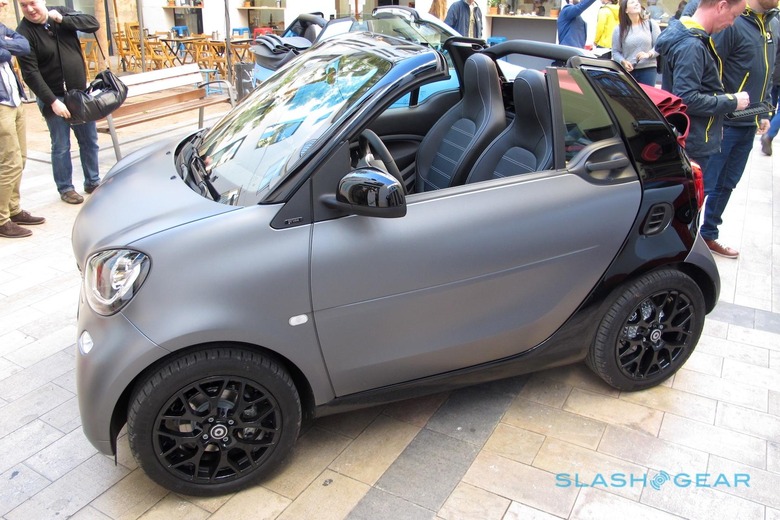
For those whose needs are met with, and are open to a microcar, there are other things to keep in mind; While the ForTwo has good fuel economy — expect an EPA combined figure around 35 mpg — there are cars that are better at sipping less gas. And while the ergonomics and packaging are roomier than you'd think, a Honda Fit, Mazda2, and other small cars with larger frames offer more practicality.
But none are as distinct, unique, or premium feeling as the Smart. And only the Fiat 500 offers a partial-convertible version, and once you factor in comfort while driving and fun, the 500 quickly fades away.
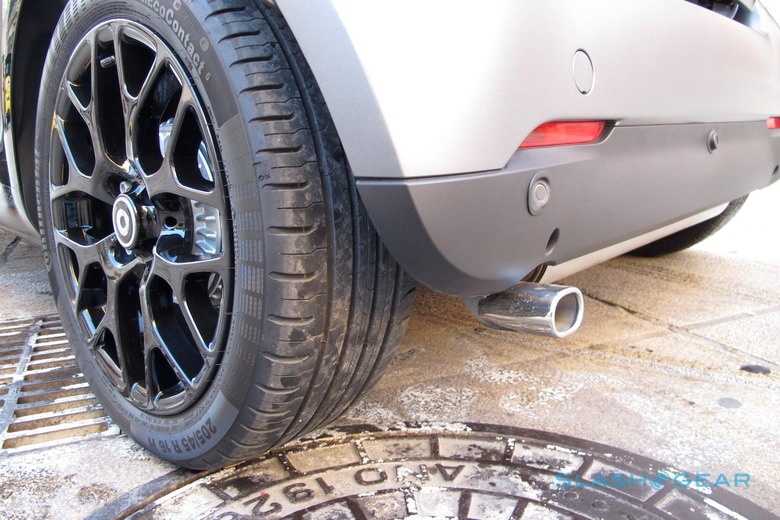
Smart embraces its size, and even rewards drivers with the world's smallest turning radius — all of 22.8 feet — and is easily the best car to park anywhere, often fitting into spaces other cars could only gaze after, bitterly. That added convenience and time-savings of not looking for a larger space play into the ForTwo's city-cred, in densely populated areas. It's also fun to mini-hoon, spinning around in circles in open parking lots doesn't get old, we uh, hear.
Darting through Spain's third largest city, Valencia, the ForTwo threaded the needle through ancient, narrow alleyways and sun-soaked roads designed before the modern automotive era. To take in a bit more of the vida Valenciana, we wanted to get the cabrio in full topless mode, and here's where this convetible is unique: There are essentially three cars in one.
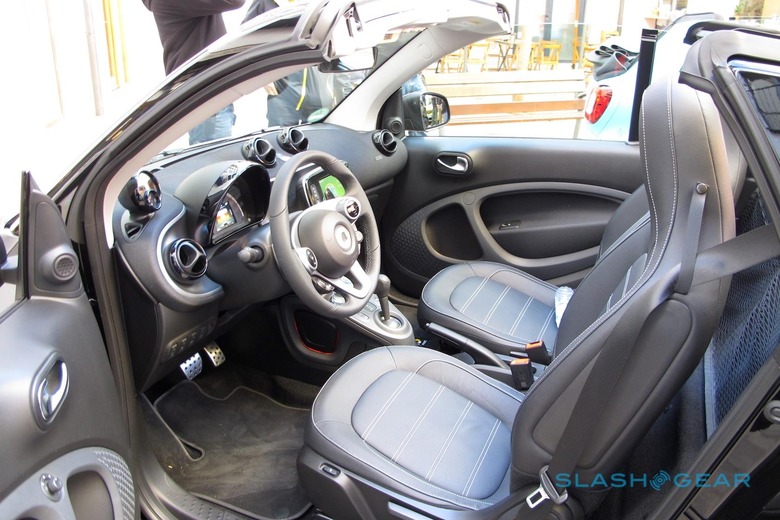
You have full coupe-mode with the top up, of course, but you also have the option of retracting the roof, while the bars above the windows connecting the front pillar to the rear, remain in place. The soft top completely retracts in 12 seconds, and at any speed. The effect is sort of like a very open panoramic sunroof. To get into full convertible mode, you need to remove the side roof bars, a process that proved to be pretty effortless and quick.
With a couple clicks of a button, the bars can be unlatched and stowed in a trunk housing meant to specifically hold them. Once you get the hang of it — one or two times of actually removing the bars should suffice — you can be in full convertible mode in 30 seconds.
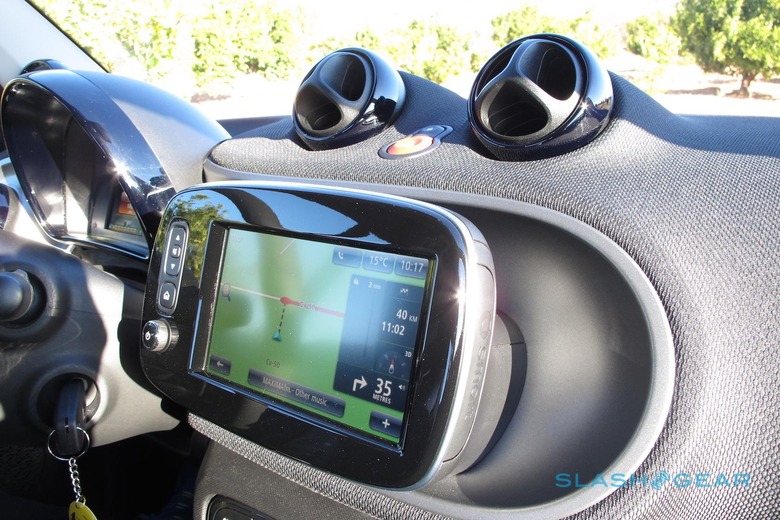
Top-down, we could take in the charm of the buildings and architecture around us, like the city's main cathedral, one that dates back eight centuries. While cruising through the city, your driving experience will depend greatly on which setting you're in.
You can toggle between Eco and Sport instantly with the push of a button. The Eco mode is good for maximizing fuel economy if that's your aim, but the driving experience is tapered back. There's a light puttering, the car occasionally lurches forward when you accelerate, and in Eco mode the ForTwo feels slow.
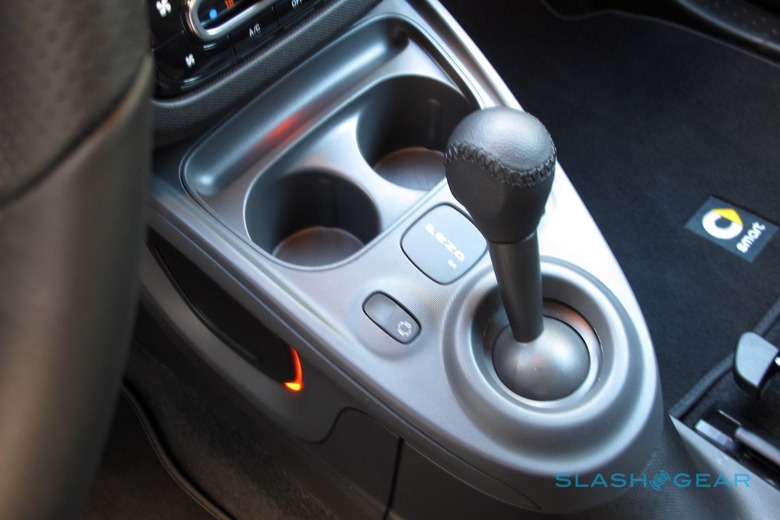
If you're okay sacrificing maximum mpg, the Sport mode not only smoothes out the driving experience, but is actually surprisingly fun. It's here that the little three-cylinder comes to life. If you manually control the shifts, performance and fun go up another notch still. Acceleration between traffic lights is quick, and in weaving through city traffic does the Smart's nimbleness and small frame become apparent.
A start/stop system deactivates and reactivates the engine when stopped at a light or idling. The restart is occurs almost instantly and is gentle enough to leave on, we've had to turn this off in some other cars, so we appreciate the more advanced system, even in Daimler's smallest car.
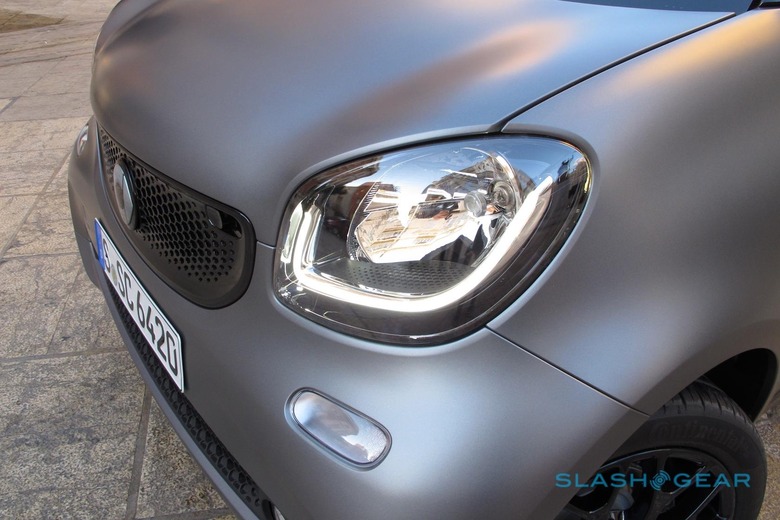
And while city driving is the ForTwo Cabriolet's forte, its highway manners were also pleasingly improved. The suspension soaked up small road imperfections amicably. Our model's optional JBL sound system—an eight speaker, six-channel, 240-watt, two-tweeter, and woofer-in-the-rear setup—brought the strings of a Spanish guitar clearly through the speakers, sound swirling all around us in the breeze at 80 mph. It's a nice luxury for audiophiles, if you can spring for it.
The 7.0-inch Smart infotainment screen is high-res, and responds well to touch. Features include a point-of-interest search, weather, the option to play music directly from your phone via Bluetooth, and navigation with real-time traffic, and traffic-avoidance.
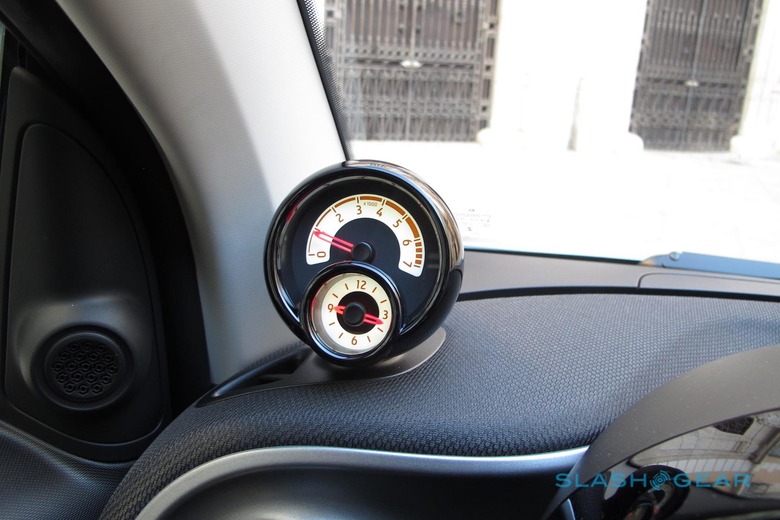
While the ForTwo Cabriolet is a natural in places like Valencia, and other European cities like Paris, Barcelona, and Rome, it similarly is at home in several American cities. Dr. Winkler describes the Smart buyer as one who wants to stand out, is style-conscious, but also environmentally aware.
Beyond immediately logical places such as San Francisco, with its Smart-designated parking spaces, San Diego, with sunny climes and eco-friendly nature, and Austin, are cities such as style-conscious Miami, and big-thinker-hub San Jose. Unsurprisingly, many of these are also places where Smart's rapidly growing car-sharing program, Car2Go, has also taken hold.
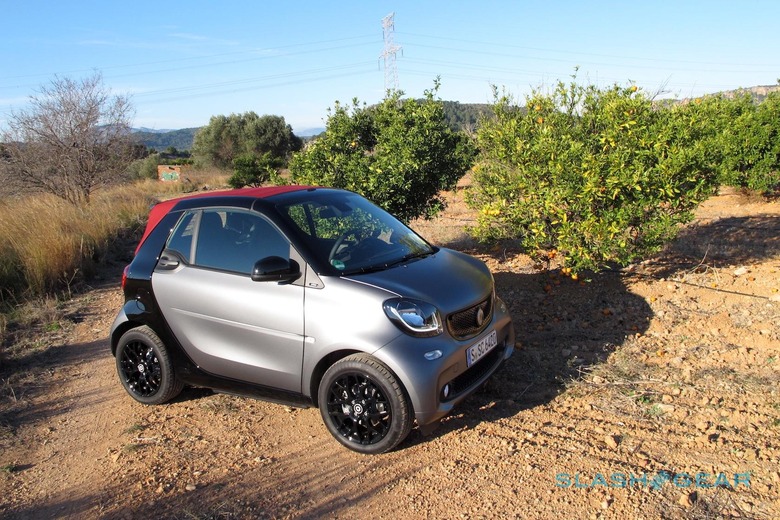
NOW READ: 2016 Smart ForTwo Coupe First-Drive
For those interested in a city car to zip around town, or considering a microcar, the Smart ForTwo Cabriolet presents a highly-improved, surprisingly fun option. With three roof options, you can retract the soft-top in just 12 seconds, or quickly remove the side roof bars for the full-convertible experience. In Sport mode, the three-cylinder turbocharged engine makes the most of its 89 hp, and new six-speed Twinamic automatic transmission.
Pricing will be available closer to launch, but expect well-optioned models like the one we drove to go near $20,000. If nothing else, go for an open-air test drive, the novelty of the experience will be well worth it, there's nothing that quite feels the same as driving this car. You might — as we did — find yourself pleasantly surprised.
[gallerybanner p="427407"]
